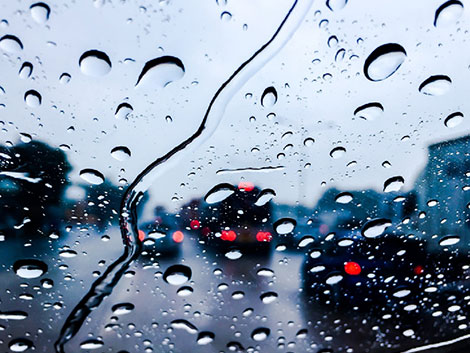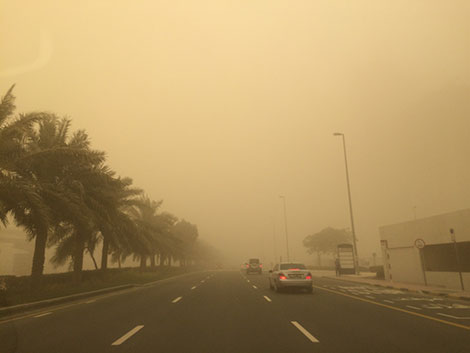RTA Safety Tips
It is important to practice safe driving techniques in unfavourable weather conditions. In that regard, below are some tips for driving during bad weather conditions.
During Rain
- Check the validity of the breaks, tires, and headlights of your vehicle, and make sure to check the level of windshield washer fluid in its designated tank in the vehicle before setting off to ensure safe driving.
- Make sure to increase the safety distance between you and the vehicle ahead.
- Whether it is a short trip or not, make sure your wipers work well for a safe journey. Furthermore, make sure that the vehicle's windows and mirrors are clean, and use the wipers and exterior lighting to enhance visibility.

- Monitor your speed constantly and drive cautiously and carefully at a reduced speed limit for your safety. Your speed may be higher than you think, and if so, gradually reduce your speed. Do not attempt to increase your speed by overtaking a slow-moving vehicle in front of you or moving away from a vehicle behind you, as wet roads increase the likelihood of slipping and reduce the efficiency of the brakes.
- Always follow traffic signs and do not instantly press on the accelerator when the traffic light turns green to avoid losing control on the slippery roads. Watch out for emergency or warning signs before entering tunnels or approaching areas with high water levels, as they will provide vital information about upcoming conditions.
- Turn on your headlights and keep a safe space between the vehicle ahead of you to avoid a collision.
- Use fog lights and the regular vehicle lights, but do not use high beam headlights where the light is reflected in foggy conditions which reduces visibility for you and oncoming vehicles.
- Only use hazard lights in case of emergencies, as using them just for driving in the rain prevents you from alerting other drivers when you encounter an emergency.
- Be patient and plan for extra travel time. As rainy conditions often lead to traffic delays and reduced driving speeds.
- Stay away from flooded areas where rainwater collects and drive cautiously on wet streets. If you encounter flowing water across the road or standing water, proceed with caution. Estimating water depth can be difficult, and cars can be swept away in less than 12 inches of moving water. If the water appears too deep or is flowing rapidly, the safest approach is to turn back and find an alternative route.
- Do not stop your vehicle on the road or near the lane markings to avoid being the first participant in a series of accidents involving vehicles approaching from behind.
- Exercise extra caution at intersections where oils can mix with water, resulting in exceptionally slippery surfaces.
- When driving in a tunnel, try to stay in the same lane as it might be difficult to see lane markings if the tunnel is submerged in water or has insufficient lighting.
- After passing through deep water or a wet tunnel, test the brakes at a low speed as soon as it's safe to do so. Water can make the brakes less effective until they dry out.
During Dust
- Ensure that all your car headlights work well.
- Be careful while driving and reduce your speed while switching lanes.
- Close your windows and turn on the AC for your safety on the road.

During Fog
- Stay to the right side of your lane to stay clear from vehicles coming from the opposite direction.
- Keep an eye on your speed and ensure you have your fog lights on.
- For your safety and that of others use your vehicle signals when necessary to warn vehicles coming from behind.
- Do not drive with your high beam lights as it reduces the visibility, instead drive with your fog lights on.
- When you must stop your vehicle, park on the side of the road and make sure to turn your hazard lights on to warn other vehicles.
- Relieve pressure on the accelerator and use the brakes if necessary.

Drive safely, and follow us on X to stay updated on all operations and conditions.
